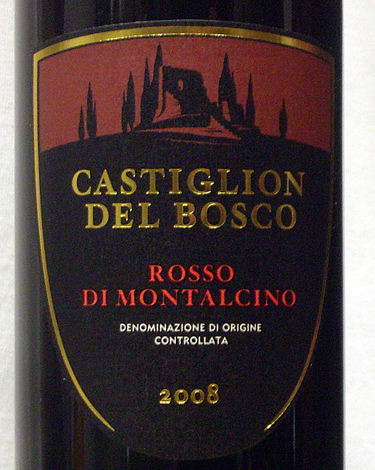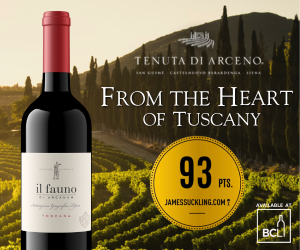How important is back label information to you when you purchase a bottle of wine?

Quite a lot, according to professors at California Polytechnic State University.
The researchers also looked at the kind of information consumers want on the back label of a wine bottle. The original research was done for a winery changing its packaging and looking for some ideas about what to do with its back label. In this case, the winery was located in California's Paso Robles wine region, but I have little doubt the results would apply to most any producer in the New World.
We all know about the decisions consumers face in the middle of wine store aisles: hundreds of bottles, just as many labels, dozens of regions and grape varieties, and all at different prices. It can be a nightmare for the casual buyer, and often it is equally perplexing to those who know a little bit about wine, too.
The researchers set up rigorous methodology that had consumers "rating four back label concepts, paired with the same front label, on their likelihood to increase purchase interest." Based on historic research, consumer tastes and perceptions of how specific products will meet their tastes are already in their minds, so the professors used the back labels to position the wine product in the consumers' minds.
In all, 14 types of information were provided and rated on a five-point scale, and consumers were asked to indicate which of 11 factors influence them when they choose a new wine. Finally, they were asked to identify which factor was the primary influence.
No surprise here, price and variety were the top two influencers when selecting a new wine, and, upon further investigation, variety was the primary factor that influences the purchase of a new wine for more than a third of wine consumers. I suppose asking consumers who likely grew up drinking varietal wine would skew those results. Although I'm thinking that even if you selected a blend, you would still want to know which grapes are in the bottle.
For 25 per cent of buyers, price remained the primary factor. Brand and word of mouth influenced approximately two-thirds of consumers. The front label influenced close to half of consumers, while the back label influenced slightly more than a quarter of wine consumers. In terms of primary influence, the label affected only a very small proportion.
Of the four specific back label concepts for a new wine evaluated by consumers, information regarding flavours and aromas easily beat out award-winning wines, appellation climate and a romantic story about the winery. In fact, interestingly, consumers indicated that a description of flavours and aromas of the wine on the back label is the most important information. Clearly, buyers want to know what to expect when they open the bottle, and they consider that more important than information about the winery, food pairings, history of the winery, or history of the wine.
In my opinion, I think the back and front labels are super important real estate for any winery and both should be used to the fullest extent to tell the story of any wine. Producer, name, variety/blend and the exact location of where the wine is made should be on the front label and not much more. The back label, as pointed out by the research, should describe the wine in terms of taste and or style of the wine followed by a sentence or two on the region/valley/sub-valley, and finally a food pairing that makes sense for the wine -- perhaps the region it is sold in.
Quick Response (QR) codes can supply more information about wine, but its use may be restricted to a younger demographic with smartphones. What's clear is the era of no back label, famous among European producers in the 1970s and '80s, is now long gone.
Lindemans Bin 85 Pinot Grigio 2012, South Eastern Australia, Australia
Price $10.50
UPC 012354087828
Score 86/100
Remarks Lindemans winemaking tends to overcome a lot of its competitors for the price delivering a fresh, clean style. In this case you get a whiff of floral notes and apple skin and a fleeting taste of nectarines and Granny Smith apple in a well-balanced in-oaked style. Drink all summer on the patio.
Drouhin Vaudon Chablis Réserve de Vaudon 2011, Chablis, Burgundy, France
Price $29.00
UPC 0012086322112
Score 88/100
Remarks I continue to be a fan of this basic Chablis fermented and aged in stainless steel for 7 to 8 months especially when you consider the price and that the fruit is grown bio-dynamically. This is pure, elegant, unplugged chardonnay with a touch of minerality. The attack is fresh with bright acidity and ripe green apple fruit. Try this with chicken salad or simply prepared fish dishes; or even better oysters on the half shell.
Pablo Old Vine Garnacha 2011, Calatayud, Aragon, Spain
Price $14.00
UPC 005060137512130
Score 86/100
Remarks Liquorice, meaty, black cherry jam, earthy notes mark the nose with more garrigue, sage and pepper throughout. Dry, fresh, slightly tannic and lean with black cherry, liquorice, earth, spice, leather and chocolate flavours. A bit youthful and astringent but with fine fruit. Solid value. Serve with lamb or duck dishes.
Masi Bonacosta Valpolicella Classico Corvina - Rondinella - Molinara 2011, Veneto, Italy
Price $17.00
UPC 008002062000037
Score 87/100
Remarks Bonacoasta is 70/25/5 mix of corvina/rondinella/molinara grown in the hills of the classico zone of Valpolicella. Production is careful but standard and 86% of the wine is aged six months in large Slavonian oak barrels; the remaining juice, the corvina, is finished in smaller new Allier and Slavonian oak casks. The nose is fresh and floral with bits of violets and dried herbs mixed with cherries and spice. Light, airy and fun drinking, reminiscent of Beaujolais.
Castiglion del Bosco Rosso di Montalcino 2008, Montalcino, Siena, Tuscany, Italy
Price $25.00
UPC 8027185108118
Score 87/100
Remarks Its medium red colour signals sangiovese as does the fragrant, spicy, floral red fruit nose. The attack is dry and tart with tight cranberry/cherry fruit and some prominent wood tannin. The entry is dry and round with more spicy, black olive and floral red fruit flavours. A simple, well-made red that would be perfect with spaghetti Bolognese, or flank steak.
Altesino Brunello di Montalcino 2007, Montalcino, Siena, Tuscany, Italy
Price $60.00
UPC 662255010137
Score 91/100
Remarks Fragrant open prune, black cherry, floral, nose with meaty, tobacco, saddle leather, dried herbs, liquorice and orange peel notes. The attack is fresh, supple and elegant on the palate with peppery, orange peel, sweet plum jam flecked with liquorice, coffee, saddle leather and cedar notes. Drink now and over the next 2-4 years. Altesino spends a minimum of four years at the winery ageing and at least two of those in oak.
Read more: http://www.vancouversun.com/life/Buying+basics/8105028/story.html#ixzz2PQURPF16

 quicksearch
quicksearch





